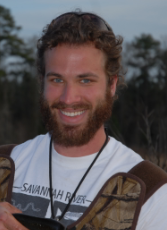Kansas NSF EPSCoR helps Kansas build its research capacity and competitiveness in science and technology through the First Award program initiated through the current Kansas NSF EPSCoR RII Track-1 Award OIA-1656006 titled: Microbiomes of Aquatic, Plant, and Soil Systems across Kansas (MAPS). MAPS First Awards are intended to help early-career faculty become competitive for funding awarded from the research directorates at the National Science Foundation. The awards do this by encouraging early-career faculty to submit proposals to the NSF or other federal funding agency as soon as possible after their first faculty appointment, and by accelerating the pace of their research as well as the quality of their subsequent proposals. First Awards are awarded to single-investigators to support their research program at their institution. Any tenure track faculty member who: 1) is currently nontenured at the assistant professor rank at the University of Kansas (KU), Kansas State University (KSU), Wichita State University (WSU), Emporia State University (ESU), Fort Hays State University (FHSU), Pittsburg State University (PSU) or Washburn University; 2) is within the first three years of his/her faculty appointment; 3) has not previously received a First Award or similar funding from another EPSCoR or EPSCoR-like (Centers of Biomedical Research Excellence, COBRE) program in Kansas; and 4) is not currently nor has previously been a lead Principal Investigator of a research grant funded by a federal agency. Individual investigators may submit a total project budget of up to $100,000 in direct costs to the MAPS First Award program. Only projects with research in areas that are related to the current Kansas NSF EPSCoR focus of microbiomes as broadly construed to be in aquatic, plant and/or soil systems were considered. The following individuals and their research projects were awarded MAPS First Awards in the Spring of 2020:
Descriptions of each project are taken directly from the recipient’s proposal.
Dr. Jeongdae Im
Assistant Professor, Civil Engineering
Kansas State University
The Role of Microbial Diversity in Controlling Greenhouse Gas Emissions from Conserved Forages
Microorganisms have significant impacts on agricultural productivity and sustainability, yet we know much less about their biodiversity than we do for plants and animals. Forages are plants or parts of plants eaten by herbivorous animals. Forages can be conserved to feed livestock during periods of shortage. Two main conservation methods are hay and silage. Hay is dried below 20% moisture and densely packed in rectangular or round shape, inducing anaerobic conditions in the central region. Silage is a forage preservation method that is based on fermentation with high moisture content (40~70%). Therefore, conserved forages are nutrient-rich ecosystems that are maintained partly or completely under anaerobic conditions, which can serve as ideal habitats for diverse microorganisms especially those involved in the production and reduction of greenhouse gases (GHGs). In our preliminary study, significant amounts of CH4 and N2O (8.7 mg CO2 eq. combined per g-forage) as well as CO2 (8.3 mg per g-forage), were produced from laboratory incubations of forage samples, which places forage conservation as the third most important source of N2O emissions in the agricultural sector based on the annual production volume of haylage. Related gene makers (pmoA and mcrA) were also detected, indicating that the conserved forages do harbor microbial communities involved in the production and reduction of GHGs. However, despite the high production volume and widespread commercial use, little is known about this ecosystem. The ultimate goal of this project is to predict GHG emission potentials from the phylogenetic diversity of conserved forage microbiomes. To achieve this goal, we will (1) to quantify GHG emission potentials of conserved forages, and (2) characterize their phylogenetic and functional diversity. These concerted efforts will provide new o the plant-soil microbiome, and mechanistic understanding of GHGs emissions from these unaccounted sources.
The proposed research will directly impact the research and industrial development of sustainable agriculture. This study will characterize the temporal variations of microbial structure in conserved forages and their GHG emission potentials. Chemical and microbiological analysis will permit estimates of GHG fluxes from forage conservation at local, regional, and global scales. Given that the current GHGs emission inventory in the agricultural sector only includes enteric fermentation, manure management, rice cultivation, and field burning of agricultural residues, this study will shed light on this previously unaccounted source of GHG. The CH4 measurements may decipher causes of unexplained fire incidents at forage storage facilities. Forages contain proteins, lipids, cellulose and lignin and their microbiome will be composed of unique taxa with a wide range of metabolic capabilities. This knowledge can be extended and applied to other ecosystems such as rumen microbiome and agricultural biogas production. The study will also provide a compelling opportunity for crop managers and livestock nutritionists to interface with engineers and microbiologists to develop safe, productive, and sustainable forage management strategies. Collectively, work will reveal the fundamental science behind the forage conservation processes and their environmental impacts.
Dr. T. M. Sonny Lee
Assistant Professor, Biology
Kansas State University
Linking microbiome function and microbial processes to plant genetic diversity in a foundation forage grass across the Great Plains grassland climate gradient
Central grasslands support $6 billion of agricultural production in Kansas annually, and are dominated by the forage grass big bluestem (Andropogon gerardii). Our goal is to disentangle the ecotypic and environmental influence on the structure and potential function of the rhizobiome, and to quantify the impact of the microbiome on the plant host responses to abiotic stresses. This research builds on a 10-year multi-site reciprocal garden platform to quantify and link the effects and interactions across a climate gradient (environment), plant host-ecotype, microbial processes, and the microbiome. Our proposal aims to 1) quantify the relationship between host ecotype, the associated rhizobiome and microbially mediated processes in soil using long-term reciprocal gardens; 2) test whether matching between plant host ecotype and rhizobiome affect fitness and drought resistance in a manipulative greenhouse reciprocal soil experiment; and 3) determine if the observed plant genetic diversity in plant populations in natural prairies across the Great Plains feeds back to affect rhizobiome composition and, in turn, affects soil processes. We will accomplish the objectives of this research by integrating knowledge and skills from mic me diversity and functions, ecological ecotypic responses, bioinformatics and computational science.
Our proposed research provides a mechanistic approach to understand the specificity and interactions of genetic, phenotypic, and microbiome functions in a foundation forage species to determine the plant- microbiome interaction in promoting resilience to climate change. One of the most important climatic changes predicted for the grasslands in the central U.S. is an alteration to the amount and timing of precipitation events. This research will help characterize A. gerardii ecotype responses to future changing climates and the extent to which the microbiome can facilitate adaptation. It will help to identify if local adaptation to climate and the microbiome limits this species’ ability to adjust to changing climate, or if populations have potential to migrate (or be restored) to match future climate conditions. Ultimately, our results will inform conservation and restoration managers to better identify the optimal regional ecotypes and describe plant-microbity and ecosystem processes under different climate scenarios.


Thomas M. Luhring
Assistant Professor, Biological Sciences
Wichita State University
Hot, Dry, and Wet Again: Effects of Drought and Warming on Wetland Microbial Communities
This funding will provide critical lab infrastructure, preliminary data, and establish expertise and capability for creating the lab-to-field continuum of experimental aquatic ecosystems – a critical component of my 2021 NSF DEB proposal. I will use this funding to set up, run, and analyze aquatic microbiome responses to simulated drought and refill across thermal regimes. Critically, this funding will create infrastructure (environmental chambers) that will be a key component in leveraging future funding from various organizations.
Statement of Objective – This project will establish critical infrastructure for creating a lab-to-field experimental continuum in preparation for my 2021 NSF DEB proposal on food web warming and drought in aquatic systems. It will also create strong preliminary data on post-drought responses of aquatic microbiomes, protists, and zooplankton communities from wetland soils. Methods –First Award funding will create capacity for thermal ecology research through the purchase of programmable environmental chambers. This work will primarily utilize intact soil core mesocosms to manipulate drying regimes across a thermal gradient. Concurrent with these first-award funded initiatives, we will pilot approaches to manipulating thermal regimes and microbiomes (inoculations from soil core mesocosms) in 1000L outdoor mesocosms, and creating an inventory of hydrological, thermal, and community composition data from wetlands across WSU’s 4,700-acre Youngmeyer reserve in the Flint Hills ecoregion in southeast Kansas.
Intellectual Merit – Work funded by the First Award will address critical knowledge gaps in how wetland microbiomes (aquatic and soil systems) respond to climate change. Namely, we will directly test the combined effects of abiotic (temperature, drying regime) and biotic factors (protist abundance) on wetland microbiomes. Wetlands are a key interface of aquatic and terrestrial ecosystems whose microbiomes are critical components of global elemental cycles (~1/3 of global CH4 emissions) (Tian et al. 2016). Studies on microbiome responses to climate change largely focus solely on abiotic forces despite the fact that biotic interactions such as predation by protists strongly shape microbiome composition and abundance (Paisie et al. 2014; Gao et al. 2019). In addition to the abiotic effects of drought, concomitant shifts in aquatic food web structure with changing hydroperiods (Corti et al. 1996; Babbitt et al. 2003) may cascade down to the microbiome given the strong effects of aquatic vertebrates on zooplankton (Chase et al. 2009), zooplankton on protists (Sanders et al. 1994), and protists on microbiome community composition and abundance (Paisie et al. 2014; Gao et al. 2019). Thus, shifts in microbiome composition, abundance, and greenhouse gas production may be simultaneously dependent on the effects of direct abiotic forcers (temperature, drought) and indirectly through the effects of these forcers on the rest of their community. Work funded by the First Award will begin to fill in key knowledge gaps in wetland microbiome responses (changes in composition, abundance, and greenhouse gas production) to warming and drought, and the trophic structure of wetlands (trophic-cascades mediated through
protist abundance).
Funding for the Spring 2020 MAPS First Awards is provided by the Kansas NSF EPSCoR RII Track-1 Award OIA-1656006 titled: Microbiomes of Aquatic, Plant, and Soil Systems across Kansas. The grant’s workforce development and educational objectives are designed to enhance STEM education in Kansas by supporting activities that will lead to an expanded STEM workforce or prepare a new generation for STEM careers in the areas of aquatic, plant and soil microbiome environments and ecological systems.

